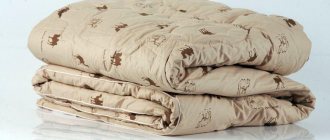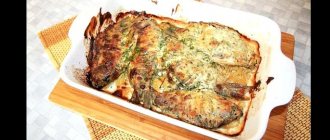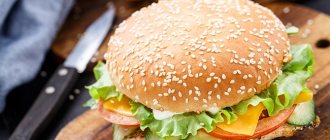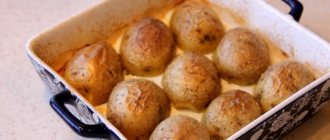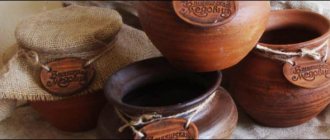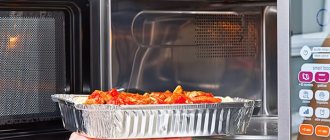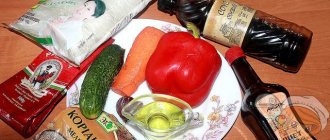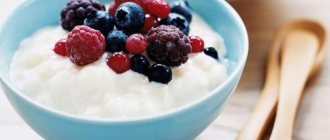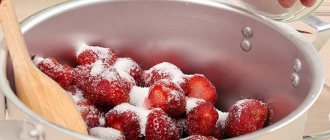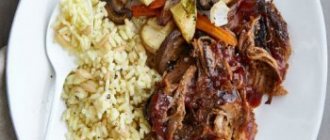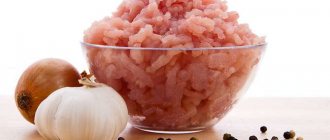The attractive appearance of glassware makes it very popular and in demand for table setting. But at the same time, the realization that glass could crack under the influence of high temperature did not give housewives the courage to use such utensils for cooking.
But today a new type of glass has appeared, intended for use in ovens. But even the exact wording of the purpose does not fully answer the question of whether it is still possible to put glassware in the oven as a cooking container.
Can glassware be used in the oven?
Features of glassware for the oven
Glassware for the oven is made from a pre-prepared type of material that can withstand temperatures of more than 300 degrees.
This glass is called heat-resistant or heat-resistant. The walls and bottom of such dishes in most cases have a thickness of 0.6 to 0.8 mm, which is quite a large value compared to this value for ordinary plates and mugs.
Glassware can withstand temperatures of more than 300 degrees
The shape of such dishes can be either round or rectangular. The choice in this case depends entirely on the preferences of the hostess, as well as on the name of the dish that she decided to prepare.
Also, such a container most often comes with a lid made of the same material, which makes it possible to use the cookware not only for cooking, but also for storing the contents, providing it with reliable protection from external conditions.
Advantages and disadvantages of glassware for the oven
Initially, glassware was used only for microwave use
In the early days, the majority of the use of heat-resistant glassware was for microwave cooking. But over time, having appreciated all its advantages, housewives began to use it with pleasure for preparing certain dishes in the oven. The main advantages include:
- transparency. Compared to metal forms, which were most often used for cooking in the oven and did not allow one to see the state of the dish at the time of its preparation. In order to understand whether the pie at the bottom was baked or whether the chicken was fried, it was necessary to use various available means. Glassware, due to its transparency, makes it possible to control everything that happens below the top layer;
Transparency allows you to control the cooking process
Possibility of keeping food hot for a long time
Chemical passivity of glass - no effect on the smell and taste of the dish
The aesthetically attractive appearance of glass objects allows you to simultaneously use them for serving
But with all the inherent advantages of glassware when used in the oven, it also has a number of disadvantages.
First of all, it should be noted that low thermal conductivity, which allows you to keep a dish hot longer after cooking, is the reason for uneven heating of the container during the cooking process. In this case, you need to be prepared that the dish will bake better in some places and worse in others. Owners of an electric oven, which heats up more evenly than a gas oven, may not feel this drawback. Therefore, in the second case, it is still better to use items with higher thermal conductivity for cooking.
It is also worth noting that, despite the good susceptibility of both high and low temperatures, glass may not withstand sudden changes. For this reason, do not add cold liquids or place cool ingredients into a heated container. Their temperatures should be approximately the same. Therefore, you cannot put a container that has not completely cooled down in the refrigerator. The consequence of these actions may be the appearance of cracks, which in turn will lead to the need for its disposal.
Advantages and disadvantages
Fireproof ovenware certainly has its advantages. Due to the fact that the dishes are completely transparent, you can easily observe the cooking process, which is very convenient. The finished dish can be served directly in the baking dish. Various multi-layer casseroles look especially beautiful on the holiday table. And if part of the meat dish or sweet pie is left, then it can be stored in the refrigerator directly in a glass container. By the way, you can reheat the dish in the microwave in the same form. It is very comfortable.
Basic rules for using glassware in the oven
The basic rules for using glass in the oven include:
- the need to place the container only in a cold or only slightly heated oven;
- It is better to remove the container using dry tacks;
- Before placing the container in the oven, you need to make sure that there is no excess moisture on the outside;
- It is prohibited to place it on a cold or wet surface after it has been removed from the oven.
Use dry oven mitts to remove the container from the oven.
Thus, well-chosen glassware for the oven, when used correctly, can be more convenient to use than other similar items. At the same time, you should not install it on a gas or electric panel for cooking, since, despite its thermal stability, its uneven heating will not allow you to cook the dish efficiently, and can also lead to cracking of the material. In addition, its aesthetically attractive appearance allows it to be used for table setting. But do not forget about the fragility that is inherent in any type of glass, and do not allow strong mechanical influences when using it.
It is better not to use a glass pan on a gas or electric panel.
Glassware made from heat-resistant glass was created for microwave ovens. Now, when asked whether it is possible to bake food in a glass dish in the oven, many housewives will immediately answer in the affirmative. You can bake biscuits in it and cook roasts according to various recipes. Glass containers are easy to clean and food rarely sticks to them. Glassware can be found in any kitchen today.
Is it possible to put a glass baking dish in the microwave?
Yes. The rules that must be followed when baking food in a glass form in the oven also apply to using a microwave. Moreover, everything is much simpler here, because the containers are placed in a switched off microwave oven, so the dishes are heated evenly.
You need to remove the dishes from the microwave using dry oven mitts and place the pan only on a dry wooden surface or on a dry towel folded several times.
If you strictly follow the rules that are designed for using a glass baking dish, then this form will serve you for a long time.
If you found the article useful, please rate my work with a like. I would be grateful if you subscribe to my channel so as not to miss new publications.
Source
Usually, various shapes and metal pans are used to prepare dishes in the oven. This type of cookware is durable and strong. But many housewives prefer glassware. What are the features of such utensils and how to choose the right product, let’s look at it in more detail.
Benefits of glassware for the oven
Not every glass container can be used for oven cooking. Only dishes made of fireproof heat-resistant glass are suitable, capable of withstanding temperatures above 300 degrees.
Glassware for the oven should have thick walls from 3 to 8 mm thick and a solid bottom. Plates, mugs, and other glass containers are not used for cooking in ovens.
Qualities for which glassware is valued:
- Chemical neutrality, glass does not react with food acids or alkaline environments. Glass does not affect the quality of the products in any way; they retain their original aroma and taste;
- Through the transparent walls you can observe the process of food preparation, watch how it changes color and browns.
Disadvantages of glassware for baking in the oven
Along with the undeniable advantages, containers made of fireproof glass have a number of disadvantages. It must be used very carefully and avoid impacts. Over time, microcracks form on the surface of the glass, they significantly reduce the impact strength of the containers, and the risk of chipping at the edges increases.
Glass is afraid of thermal shock and can instantly crumble if the housewife places a cold dish in a heated cabinet or places a hot fryer on a cold stand or under running cold water.
Another significant drawback: glass is not able to accumulate heat; in glass containers, the bottom and walls heat up unevenly. You need to be prepared for the fact that the baked goods will be unevenly baked; this is especially true for gas stoves. This problem does not arise in an electric oven; you can safely bake pies in glass.
Review of manufacturers
Today, there are many different brands that produce high-quality heat-resistant glassware. Here is a small rating of manufacturers so that you can make the right choice.
Products from Simax are in great demand among modern consumers. All dishes are made of high-quality glass, which perfectly withstands high and low temperatures and is durable. The products of this brand are distinguished by their exquisite design, which attracts many. A wide variety of shapes and models is another advantage of this brand. All products are suitable for cooking in the oven and microwave.
Dishes from the Russian brand VGP have also managed to prove themselves on the positive side. All products are made of heat-resistant and high-strength glass, which perfectly withstands chemical exposure and high temperatures. Most products of this brand can be used not only for baking in the oven or microwave, but also for cooking on a hob, including gas.
Smart Cooking is also renowned for its durable and long-lasting products, which are made from high quality materials. Dishes from this brand are very practical and are not afraid of high and low temperatures. Any product can be washed in the dishwasher. This company produces dishes of different shapes and sizes.
Types of glassware by type and volume
First, a few words about the variety of shapes of vessels used for cooking in the oven. They come in round, oval, rectangular, square, with straight and beveled walls. In recent years, manufacturers have been offering original braziers in the form of Asian national utensils. You can choose a container for any volume that the housewife needs. To make the right choice from all this variety, it is worth noting the features of each type of utensils offered.
Pots
Heat-resistant glassware can be used in the microwave and on cooking surfaces. You can cook broth, soups, and side dishes in saucepans. They are available in capacities up to 3 liters. In the oven you get delicious jacket potatoes; in the enclosed space of the pan they are evenly baked and retain their beneficial properties. Beneficial components from the skin are absorbed into the pulp. The pans produce crumbly porridge; glass perfectly reveals the taste of the cereal.
The flat lid is used as a frying pan; it can be used to fry cutlets on the stove with a little added fat. In the oven it is used as a small roasting pan; it is used for baking multi-component omelettes and preparing julienne.
The pan is convenient in that it and the lid have comfortable handles in the form of ears, which make it convenient to grab the pan when placing it in and taking it out of the oven.
Sauté pans
A saucepan is usually called a low pan with smooth walls. It is usually used for preparing stews, stews, stuffed vegetables and squid, and cabbage rolls. The lid from the saucepan is also used as a separate vessel. By purchasing one item, the owner gets two in one. Saute pans are produced not only traditionally round, there are other shapes: oval, rectangular, square. A stewpan must have handles; they may be smaller than those of a saucepan.
In a saucepan you can cook casseroles, biscuits, roasts, and other dishes that require heat treatment in the oven.
Braziers
Manufacturers offer baking dishes of any shape, size, depth. There are containers with low sides and high ones, up to 4 cm; they can be straight or slightly sloping. Roasting pans do not always have handles; containers often have to be removed from the oven using smooth walls. It's not entirely convenient. Dutch ovens are equally good for ovens and microwave ovens.
By the way, to bake meat and fish in a roasting pan, housewives often use foil instead of a lid. The dish is covered with it in two layers. You need to make a small hole at the top for steam to escape. At the end of cooking, remove the foil and allow the dish to brown.
Ducklings
Such a vessel always has a curved shape; you can bake a whole chicken or duck in it. This container is suitable for preparing jellied meat and saltison. The duckling usually has comfortable handles. The only negative is the heavy weight. It is made with a massive bottom and thick walls. But the flat lid can be used as a container for cooking fish.
By the way, square and rectangular containers are considered more economical for portioned dishes: stuffed peppers, cabbage rolls. When laying, there is less free space.
Features of care
Heat-resistant glassware requires careful handling. Be sure to adhere to the rules specified in the operating instructions. It says whether glass pans can be placed in a preheated oven if they contain cool food. The dough and other ingredients must be heated simultaneously with the glass. You need to put the prepared dish in a cold oven. When the walls are suddenly heated or cooled, internal stresses arise in the glass and the container may burst.
It is important to properly cool food in glass containers. Place it on a dry wooden cutting board or thick cloth so that the glass cools evenly. Prepared dishes should not be placed on a damp or cold surface.
There should be no drops of water on the outside of the container that is placed in the oven. It is better to use wire racks rather than baking sheets instead of a trivet. Do not add cold ingredients to containers during cooking. The amount of water is determined immediately. If there is a need to add it, you need to pour boiling water in a thin stream into the center of the dish. Baking products are placed so that large pieces and foods that require long cooking are closer to the wall.
Terms of use
If you use glassware correctly, it will serve you for many years. Using a baking dish is easy; it is convenient to bake pies or roast meat in it. It is important to follow some rules.
- Under no circumstances should you place dishes in a hot oven. If you put the dish directly into a hot oven, the mold will crack. You can only place dishes in a cold oven. Especially if you are using a gas stove.
- After removing the finished dish from the mold, it should not be immediately soaked in water. The container needs to cool completely before it can be washed. If the mold does not have time to cool completely, then there is a high probability that cracks will appear due to temperature changes and the dishes will be damaged.
- After finishing cooking, do not rush to immediately remove the mold. Let the dish sit in the oven for about 10 minutes. As soon as you remove the finished dish from the oven, do not place the dish on the stone countertop. Be sure to prepare a wooden stand or just a cutting board in advance. It is also important to remember that the surface on which you place the hot glass pan must be dry.
The dishes need to be dried thoroughly and only then start cooking in them. If you put, for example, chicken in a mold, and the outside walls of the dish remain wet, then cracks will appear during baking.
How to Clean Oven Glassware
Glass is afraid of rough abrasives; scratches remain on the glass. Instead, use coarse salt or baking soda. When washing oven containers by hand, you can use any product. Dishwashers use a tablet that is usually added. Mustard powder has long been considered a good cleaning agent for glass. Apply a thick paste to dirt and deposits and leave the container for 2-3 hours. Then just rinse the dishes with cool water.
When food or dough burns, heat-resistant glassware is first cooled and then soaked in warm water. Leave for several hours. After this, the glass can be easily cleaned with a soft sponge.
How to choose the right heat-resistant cookware
When choosing containers for baking or preparing main courses in the oven, it is better to give preference to brands with history and reputable manufacturers. What to look for:
- The quality of the surface, the edges and seams from the mold are bent carefully. The dishes should not have folds, irregularities, or depressions;
- Transparency. Inclusions in the form of air bubbles, small pebbles, and dark inclusions are unacceptable. The glass should not be cloudy;
- Marking of heat-resistant glass; the labels must have a corresponding inscription or icon. If in doubt, you need to request a certificate.
The volume of dishes is chosen based on the composition of the family. Usually, several containers of different sizes and shapes are purchased. Universal utensils can always be used in any kitchen.
Many housewives have a reverent attitude towards dishes made of tempered glass. They value transparent containers for their ease of care, versatility of use, and appearance. Glass surfaces are easy to clean and food rarely sticks to them. Even the fragility of the dishes does not bother them. With proper care and following the rules specified in the instructions, glass ovenware will delight you with delicious dishes for a long time.
Video: Juicy chicken with potatoes in a spicy lemon marinade
Could our grandmothers imagine that we would bake dishes in the oven using glassware? In their times, this material was too fragile and sensitive to temperature changes. And to this day, not all housewives are ready to exchange tried-and-tested metal baking sheets, cast-iron frying pans and ceramic pots for glass products. To do this, you need to evaluate all the advantages of transparent forms and personally verify their exclusivity.
PosudaMart In portioned glassware you can not only prepare dishes, but also serve them at the table
What kind of glass is used
The production of pans from heat-resistant glass was developed relatively recently. The raw materials used in the manufacture of tableware are practically no different from the material for glasses and vases, but by adding additional components they acquire their heat-resistant properties. Such dishes can withstand heating up to +400 degrees and the thicker the walls, the stronger the product and the better it can withstand temperature changes. Pans are made from transparent glass with durable and beautiful designs and brown glass, which is no different from a transparent product and has the same qualities.
The material reacts only with hydrofluoric acid, “regia vodka” (this is a mixture of two concentrated acids, sulfuric and nitric).
Features of heat-resistant glassware
At first, heat-resistant glass products were used only in microwave ovens. They are now called the best of the best oven roasting containers because they:
To be fair, there are a couple of shortcomings worth mentioning. , even heat-resistant glass remains glass - it must be handled with care, avoiding shocks and other mechanical influences. , oven-safe glassware may crack due to sudden temperature changes. Use it correctly:
- heat and cool the mold gradually;
- Make sure that the outer surface of the product always remains dry;
- add a little oil;
- place glassware in a cold or lukewarm oven;
- do not pour cold liquids into a heated form and do not place cold foods;
- use dry oven mitts to remove the pan from the oven;
- do not place hot dishes on a wet or cold surface;
- Do not scrape the glass with a knife.
By following simple rules, you can count on the heat-resistant glass product to serve you for decades.
PosudaMart Follow the rules for use and care, and glassware will serve you for many years
Rules for using glass mold
Before first use, the mold should be washed with hot water and dishwashing detergent.
Rule one. The glass form filled with food should only be placed in a cold or slightly warm oven.
Some argue that if you put a glass dish in a heated oven on a cold rack, nothing will happen to it. But, as practice shows, sometimes glass cannot withstand such differences in temperature and cracks. This is due to the fact that between the bars of the grille the glass heats up completely differently than where it comes into contact with the metal. And the difference in temperature conditions contributes to cracking.
Of course, this largely depends on the quality of the product. Glass molds from well-known companies last for many years without any unexpected consequences. But more often than not, housewives cannot afford to buy a very expensive item, so they are content with buying a cheaper product.
It will be correct if the glass form is placed not on a wire rack, but on a baking sheet. But the baking sheet must be warm. To do this, turn on the oven at the lowest heat setting, and place the baking sheet not in the oven, but on it. Then the baking sheet with the form is sent to a slightly warm oven and only then the desired temperature is set.
Choosing glassware for the oven
The main advice is don’t save money. Due to its excellent characteristics, a product from a well-known brand will pay for itself very quickly.
Pay attention to the surface of the mold to make sure there are no foreign inclusions, air bubbles, irregularities, depressions, cloudy islands, roughness or scratches. The glass must be transparent, uniform, without clouding.
Heat-resistant cocotte makers, braziers, cauldrons, cauldrons and tagines are provided with marks indicating their heat resistance. If there are no such icons, refrain from purchasing.
“>
